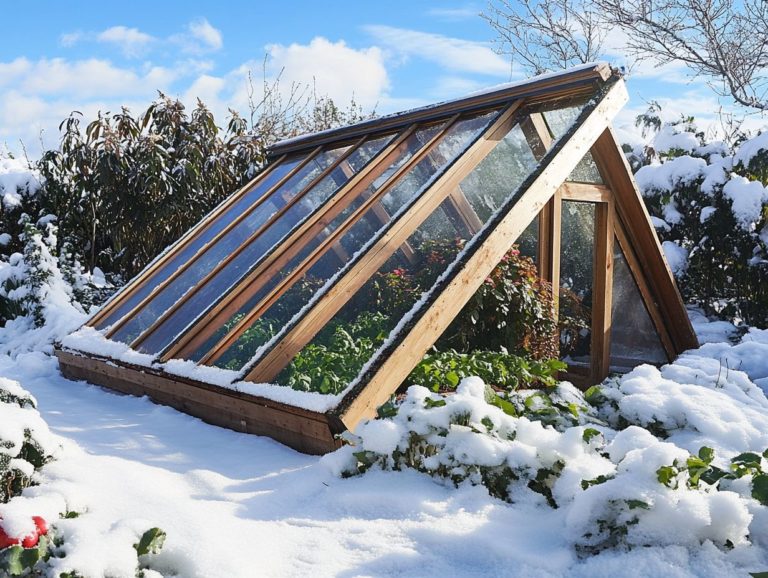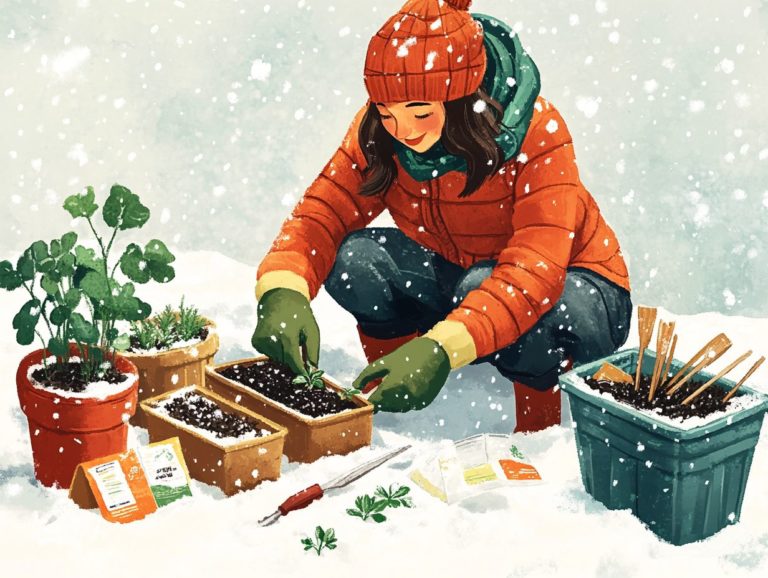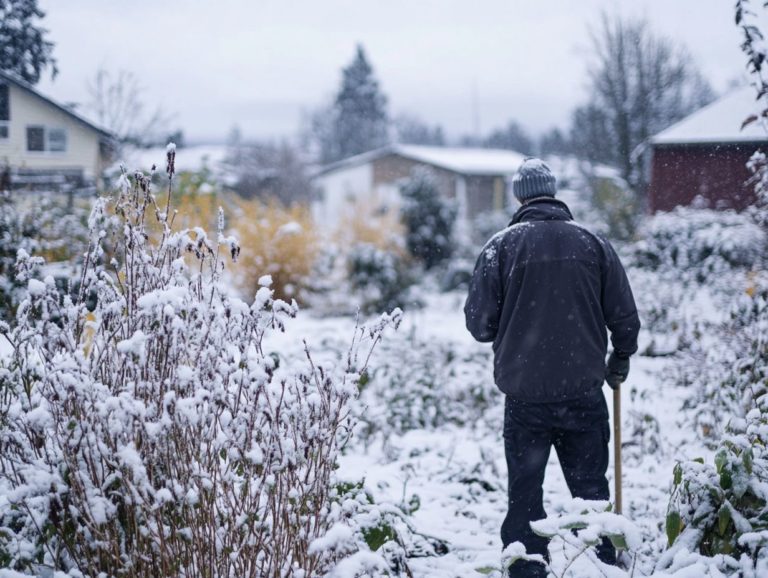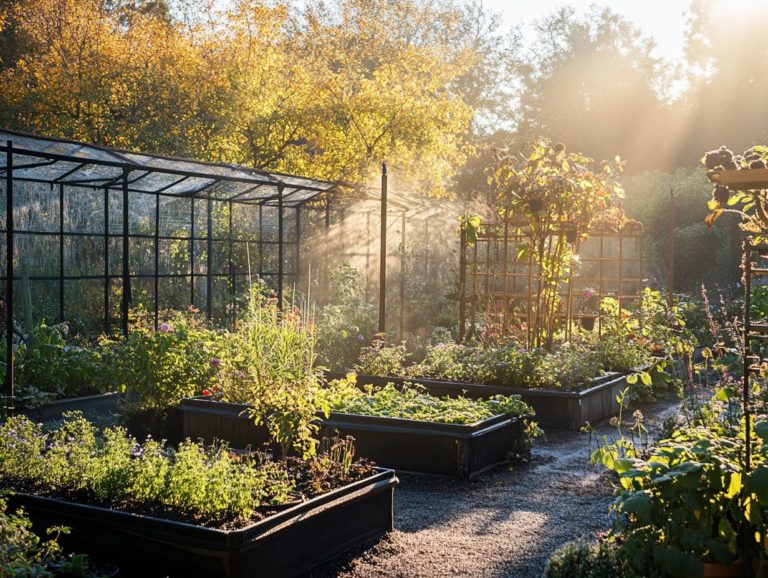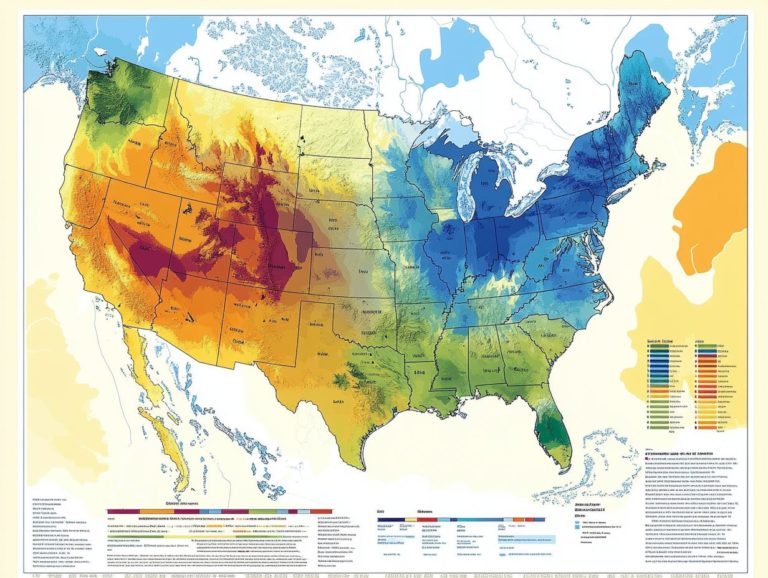Winter Gardening: What to Grow Indoors
Winter gardening offers a wonderful chance to nurture your green thumb, even when temperatures drop. Cultivating plants indoors can liven up your home, providing fresh produce and vibrant greenery.
Let s dive into the exciting benefits of winter gardening! We ll showcase the best plants to grow indoors, along with essential supplies and techniques for success. You ll also learn about common challenges and how to keep your indoor garden thriving.
Embrace the winter season and discover the joys of indoor gardening!
Contents
Key Takeaways:
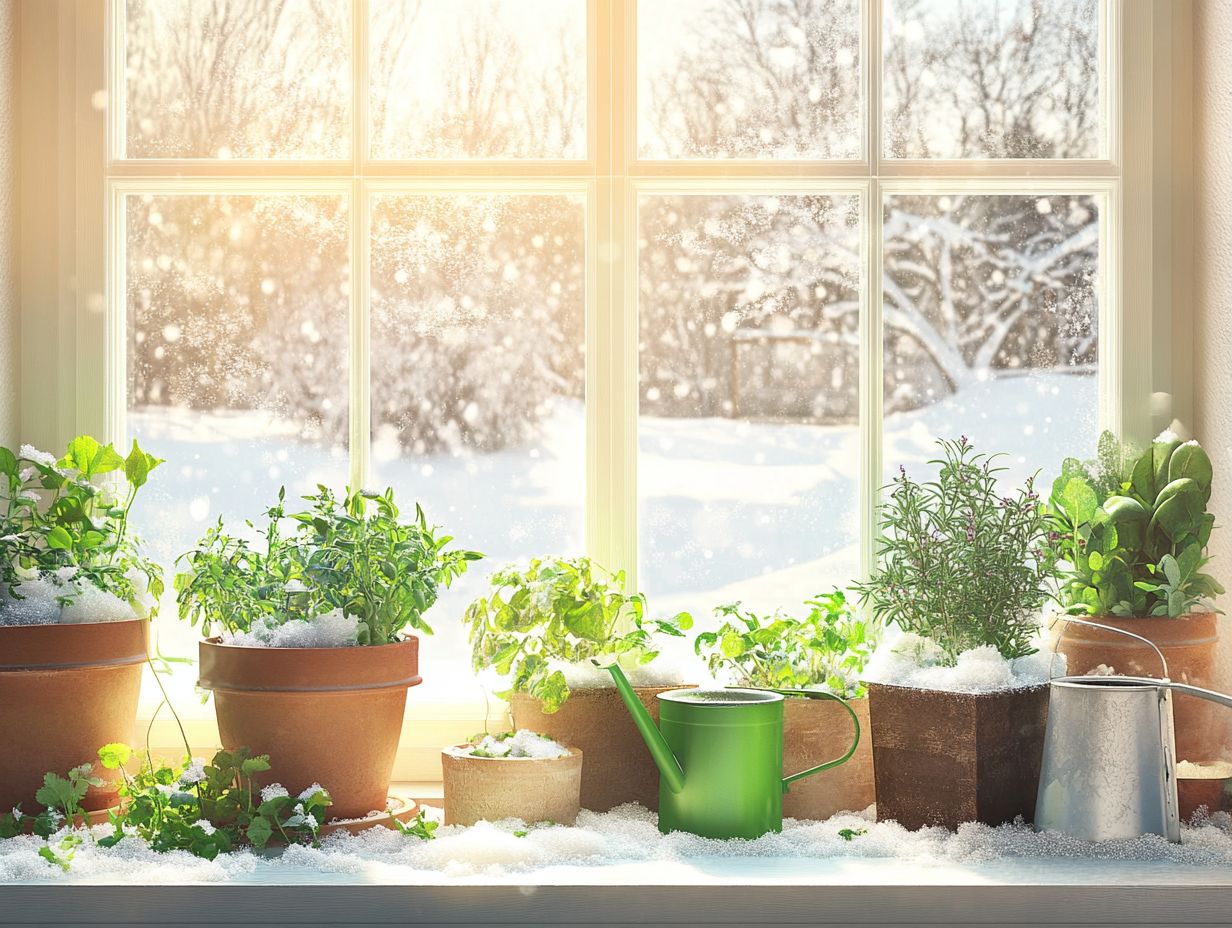
Benefits of Winter Gardening
Winter gardening has many benefits that can turn your indoor space into a lush haven. By using the right techniques, you can grow various vegetables indoors, ensuring fresh produce all winter long.
This practice allows you to care for low-maintenance plants and promotes a sustainable lifestyle through homegrown food. Growing plants in winter is also a great way to boost your mental well-being and brighten up those long, cold days.
Why Grow Plants Indoors During Winter?
Indoor plants do more than beautify your space; they give you year-round access to fresh produce, which is often hard to find in winter. To care for these plants, having proper light and temperature control is key.
Without enough light, plants can t make food effectively, which may stunt their growth. Keeping a warm, steady temperature mimics their natural habitat, helping them thrive.
Homegrown food is not only tastier but also often more nutritious than what you find in stores. Plus, indoor gardening can improve your mental well-being, providing a therapeutic escape during dark winter months.
Types of Plants to Grow Indoors
Choosing the right plants can turn your indoor winter garden into a vibrant oasis. By considering the types of greenery that thrive in your environment, you can create a diverse indoor sanctuary.
Best Plants for Indoor Winter Gardening
Some top choices for winter indoor gardening are nutrient-rich herbs like cilantro, basil, and dill. Fast-growing microgreens and vegetables such as green beans, carrots, kale, and bok choy are also excellent options.
These plants not only add flavor to your meals but also brighten your indoor space. For example, basil loves warm, sunny spots and needs consistent moisture, while cilantro prefers cooler temperatures and less direct sunlight.
Microgreens sprout quickly and are packed with vitamins. Kale thrives indoors and offers impressive nutritional benefits, including high levels of vitamins A, C, and K.
To keep your plants growing well, monitor light levels, maintain soil moisture, and ensure they receive the right nutrients.
Supplies and Equipment Needed
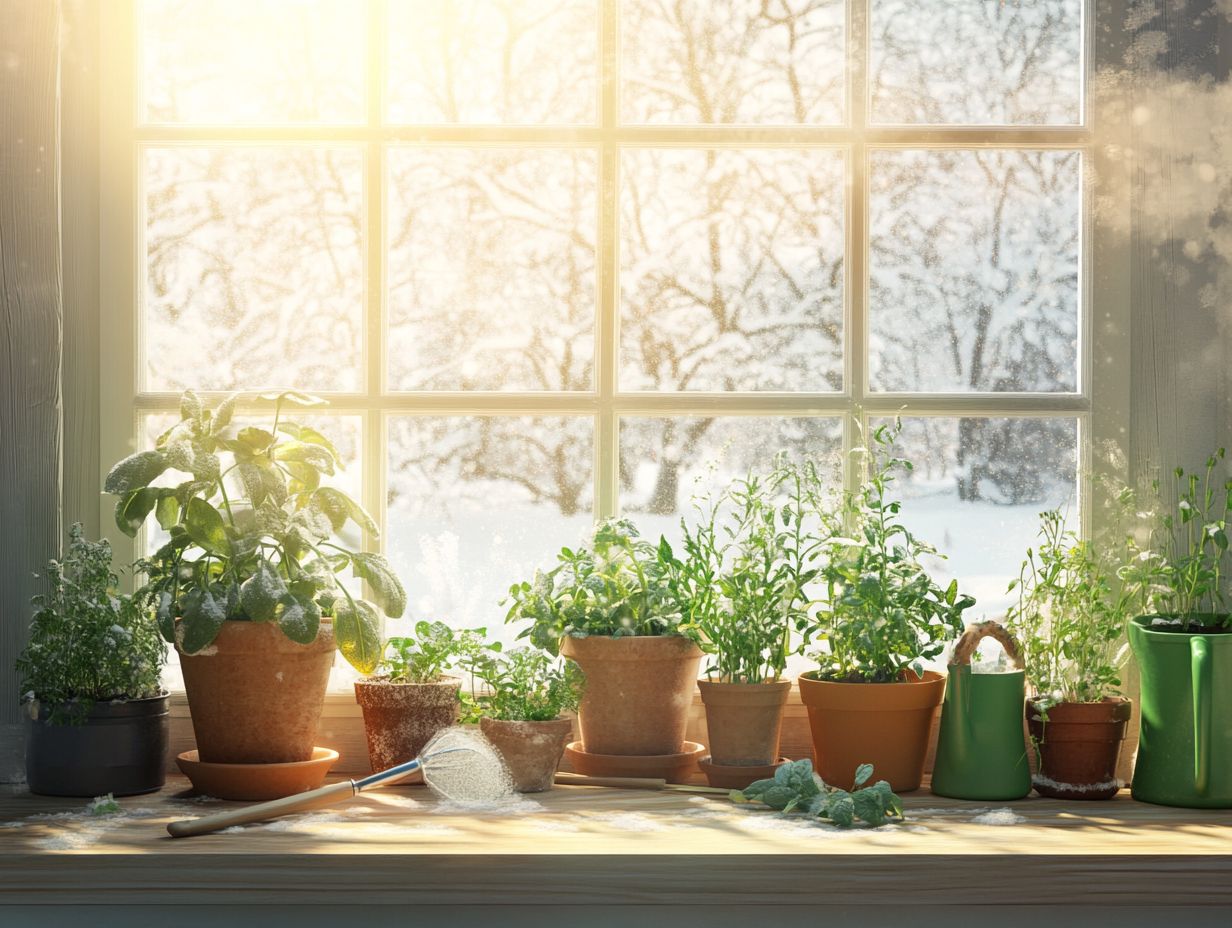
To create a thriving indoor winter garden, it’s crucial for you to gather the right supplies and equipment. This ensures optimal growth conditions and allows you to nurture your plants indoors throughout the winter season.
Essential Tools and Materials
Essential tools and materials for maintaining your indoor garden include grow lights to ensure light availability, heat mats for optimal temperature control, and humidity domes to create perfect conditions for seed starting.
Each of these components is vital in providing your plants with the right environment to thrive indoors.
Grow lights deliver the necessary wavelengths for photosynthesis. They also extend daylight hours, mimicking seasonal changes crucial for plants needing specific light conditions.
Heat mats enhance germination rates by offering consistent warmth, helping seeds sprout quickly and healthily. Meanwhile, humidity domes play a key role in retaining moisture, which is essential during the early stages of seed growth.
By effectively combining these elements, you can adopt a sustainable approach to container gardening, enabling both novice and experienced gardeners to cultivate a flourishing indoor oasis.
Indoor Growing Techniques
Learn various indoor growing techniques to create a thriving indoor garden! By doing so, you enable yourself to effectively nurture a diverse array of plants within your space, whether through advanced hydroponics systems or the simplicity of container gardening.
Methods for Successful Indoor Gardening
Successful indoor gardening hinges on a blend of meticulous plant care, which includes consistent watering, ensuring optimal light availability, and utilizing organic fertilizers to stimulate growth.
By grasping the specific lighting needs of your plants, you can cultivate an environment that emulates natural conditions, allowing your greenery to flourish no matter the season.
Establishing a precise watering schedule is crucial; it helps you avoid the common traps of overwatering or underwatering that many indoor gardeners fall into.
Explore different fertilization methods like composting or liquid organic nutrients to boost your plants’ health! For those truly committed to the art, experimenting with a variety of plant species and employing techniques like companion planting the practice of growing different plants together for mutual benefits can transform your indoor space into a vibrant ecosystem, offering both beauty and tranquility.
Dealing with Winter-Specific Challenges
Winter presents unique challenges for your indoor gardening efforts. Issues like nutrient deficiency, humidity control, and temperature fluctuations can significantly impede plant growth if you don t implement effective, tailored solutions designed specifically for the indoor winter garden environment.
Act now to address these factors and ensure your plants thrive this winter!
Common Issues and Solutions
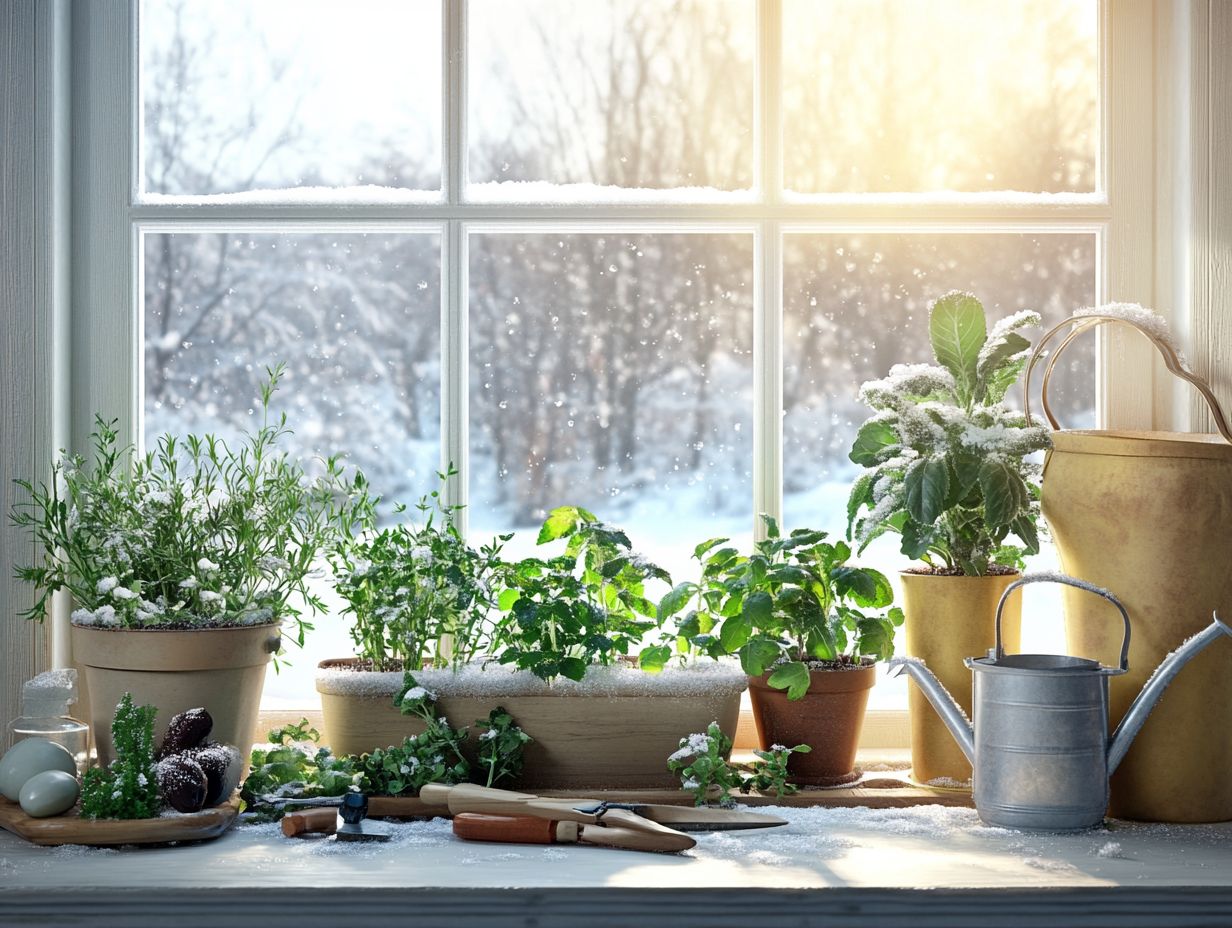
Common challenges you might encounter in indoor gardening include nutrient deficiencies, which can easily be remedied with organic fertilizers. Humidity control can be a challenge, often requiring humidity domes to maintain optimal plant health.
During the winter months, you may face further obstacles, such as inadequate light disrupting photosynthesis and colder temperatures placing stress on your plants. Don t let low light levels hold your plants back! Invest in grow lights that mimic natural sunlight, guaranteeing your plants receive sufficient exposure for robust growth.
Temperature management is equally vital; maintaining consistent warmth with heating mats or adjusting your thermostat can foster healthier plant development.
You may notice fluctuations in nutrient levels due to slower growth rates in cooler weather. By regularly monitoring pH and nutrient content, you can proactively avoid deficiencies, ensuring your plants continue to thrive even during the depths of winter.
Maintaining Your Indoor Garden
Maintaining your indoor garden requires a commitment to regular care routines and attentive practices that ensure your plants flourish. This includes effective watering, carefully monitoring growth, and providing essential nutrients to create an optimal environment for thriving greenery.
Tips for Caring for Your Plants
Caring for your indoor plants comes down to a few straightforward yet impactful strategies, such as grasping their watering needs, monitoring light exposure, and supplying the right nutrients through organic fertilizers.
It’s essential to pay close attention to each plant’s unique habits and preferences, as different species thrive under different conditions. Some plants might bask in direct sunlight, while others prefer the cozy confines of lower light settings.
Keeping an eye on the moisture level in the soil is key to avoiding the pitfalls of overwatering or underwatering both of which can lead to unfortunate outcomes. When choosing soil, opt for organic varieties that promote good drainage and aeration.
Check your plants regularly for signs of pests or diseases to keep your indoor garden thriving! This will help ensure that your garden stays vibrant and healthy, transforming your space into a flourishing green oasis that enhances your living environment.
Frequently Asked Questions
What is Winter Gardening?
Winter gardening refers to the practice of growing plants and vegetables indoors during the colder winter months when it’s too cold to grow them outside.
What are the benefits of Winter Gardening?
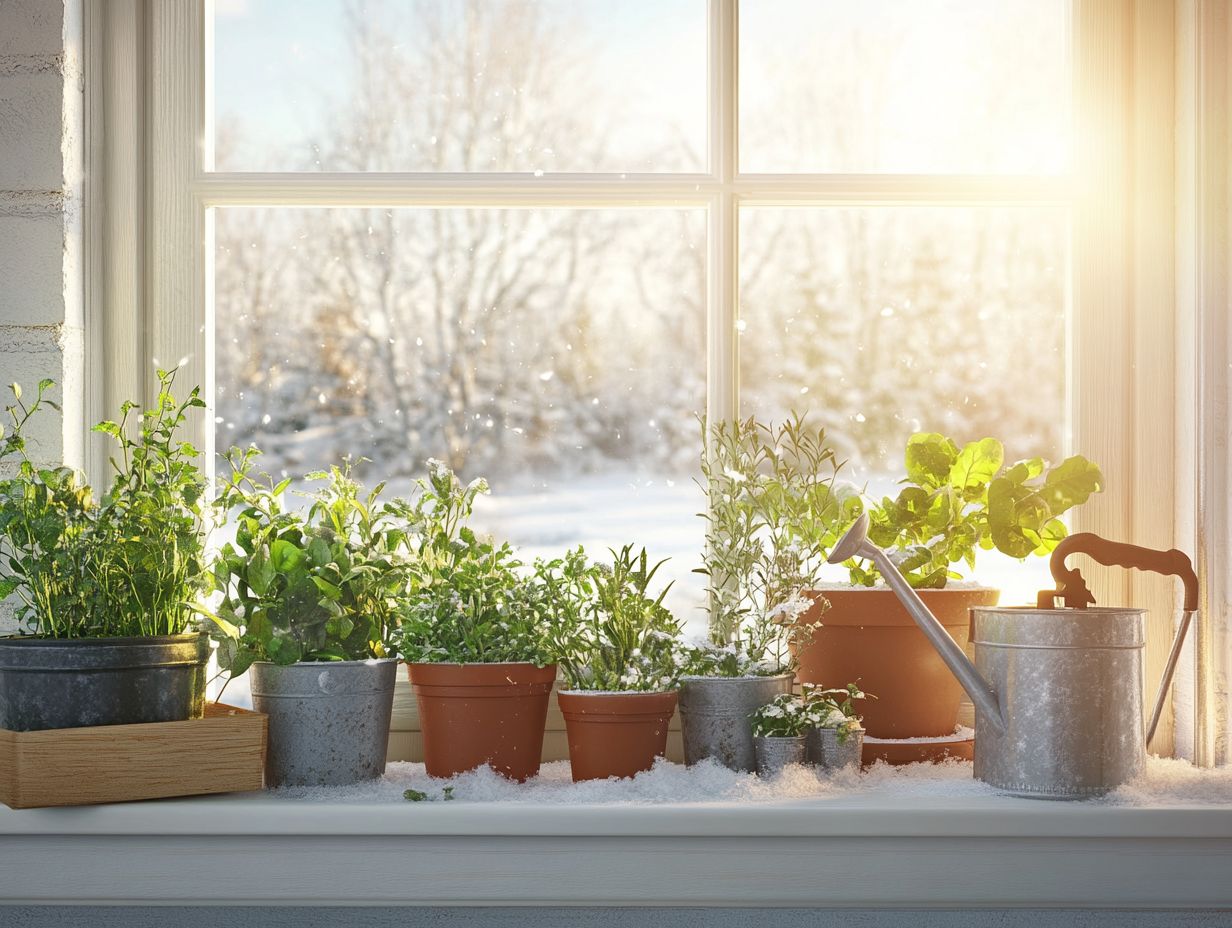
Winter gardening allows you to continue growing your own fresh produce, even when it’s too cold outside. It adds some greenery indoors and life to your home during the dreary winter season.
You can also enjoy growing produce indoors using hydroponics, a method of growing plants without soil, or traditional soil methods.
What are some good plants to grow indoors during winter?
Some good plants to grow indoors during winter include herbs like basil, chives, and parsley, as well as leafy greens like spinach, lettuce, and kale. You can also grow some vegetables like carrots, radishes, and microgreens.
How should I care for my indoor winter garden?
Make sure your plants receive enough natural light or invest in grow lights. Keep the soil evenly moist and avoid overwatering. Fertilize your plants regularly and keep a close eye out for pests.
What are some tips for starting a winter garden?
Start by choosing a suitable location for your plants, with enough natural light or grow lights. Use well-draining soil and choose plants that thrive in cooler temperatures. Consider using a humidifier to help mimic outdoor growing conditions.
Can I grow vegetables all winter long indoors?
Yes, you can continue to grow vegetables indoors all winter long as long as they have enough natural light or grow lights and the proper care. Some vegetables, like lettuce and spinach, can even be grown year-round indoors.
Start your indoor winter garden today and enjoy fresh produce all season long!

